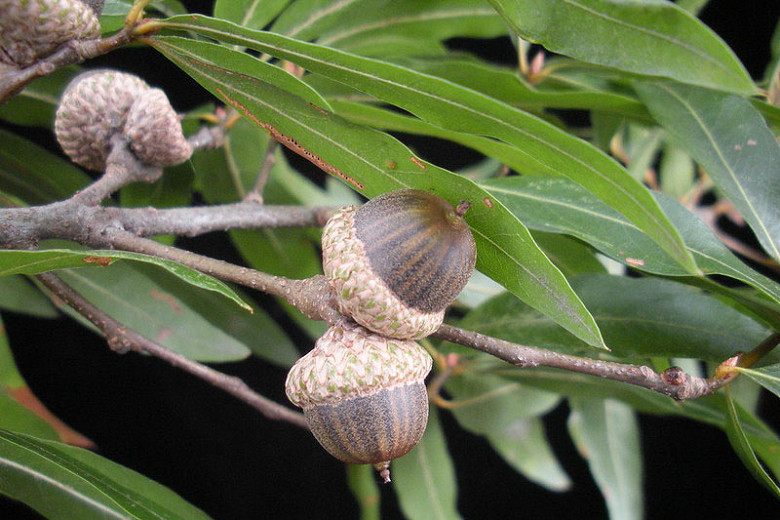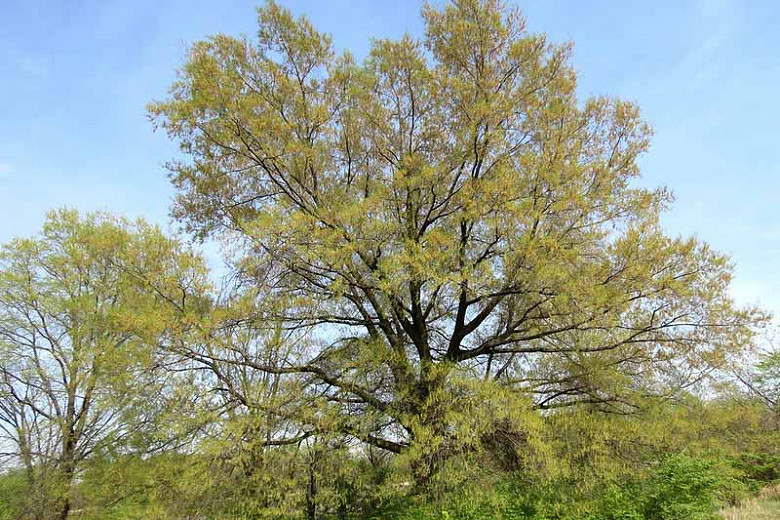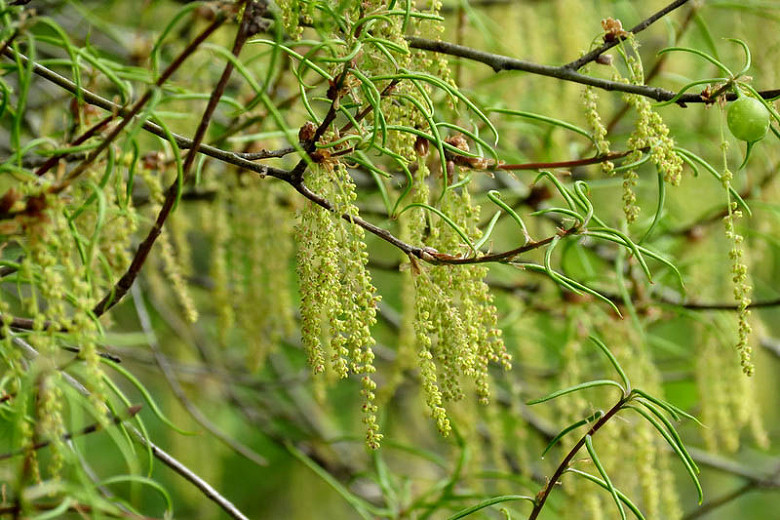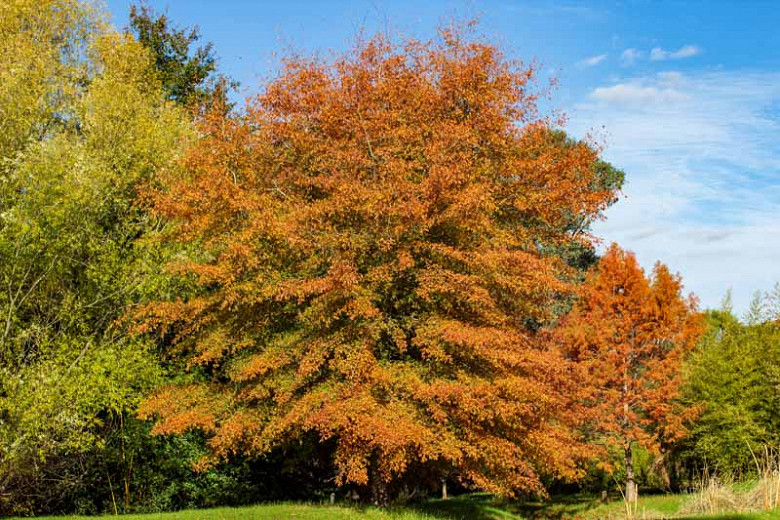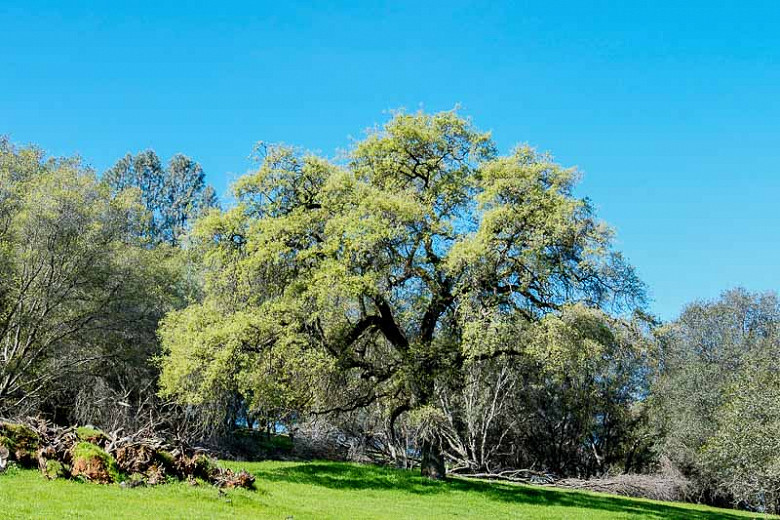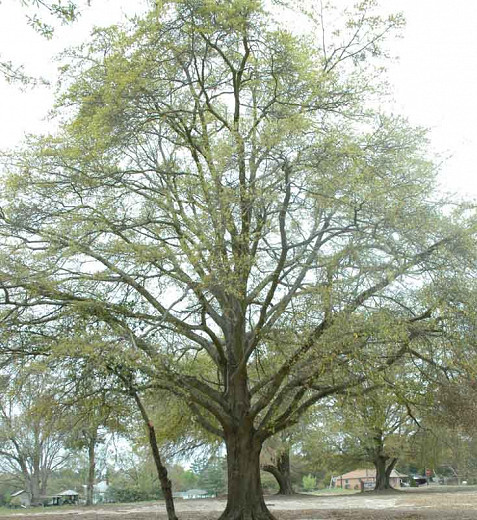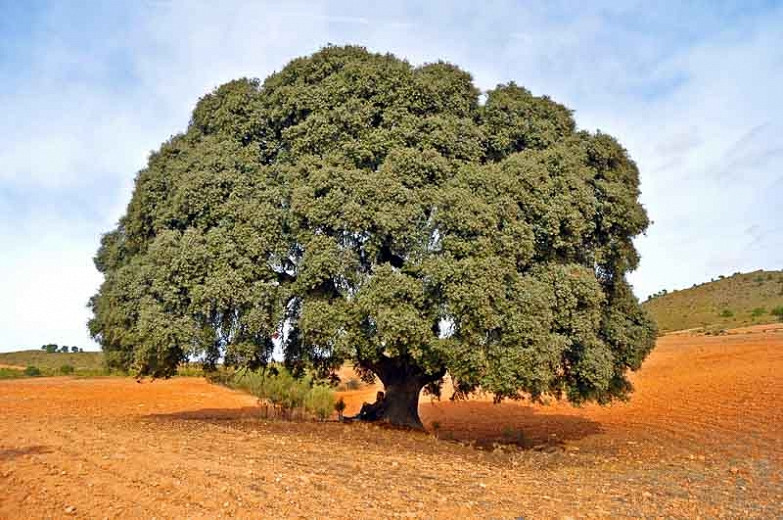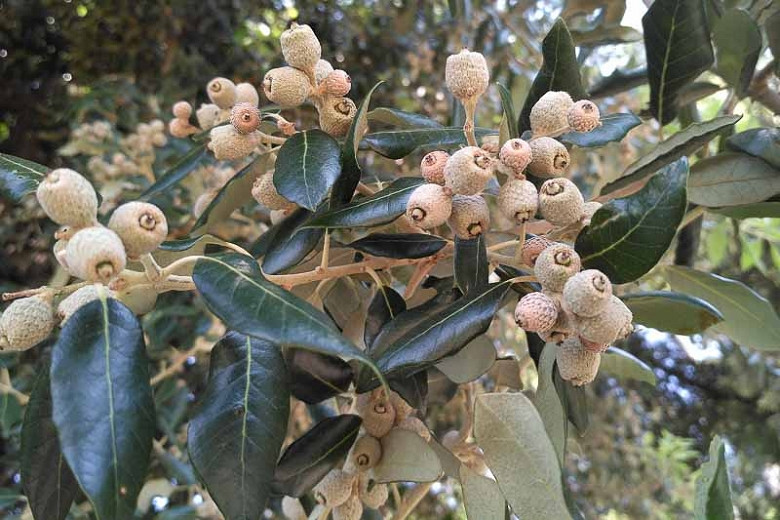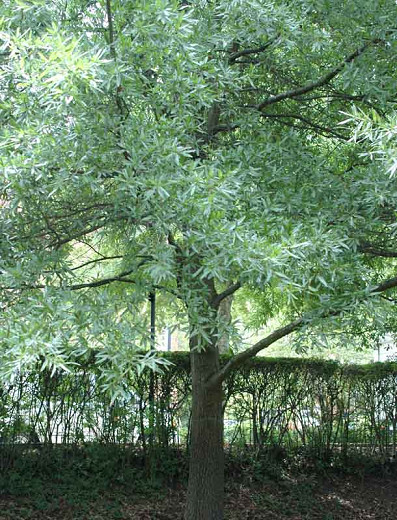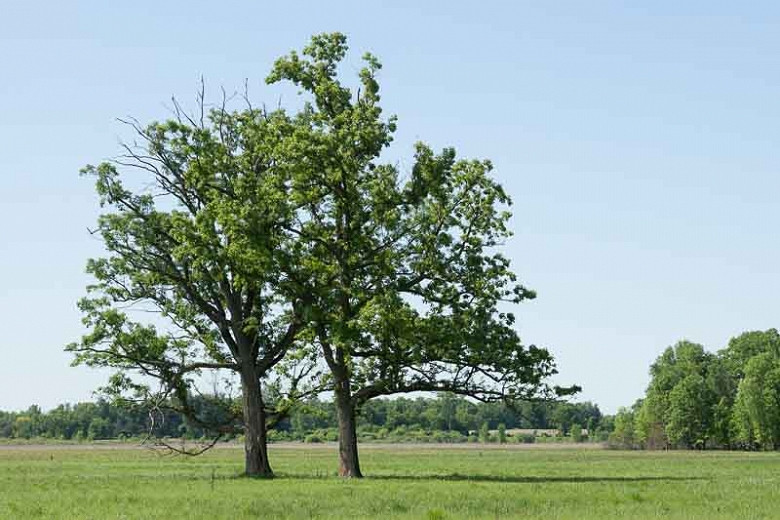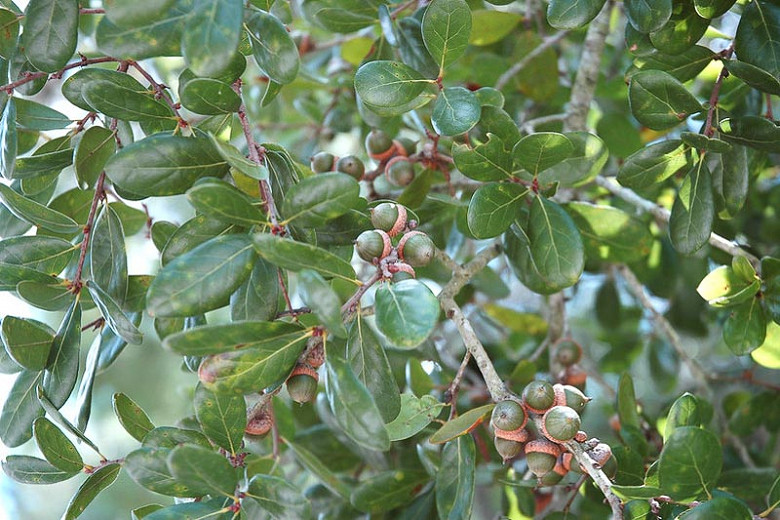Quercus phellos (Willow Oak)
A handsome and popular shade tree, Quercus phellos (Willow Oak) is a medium to large, deciduous tree with a straight trunk and an oval to rounded crown with upswept branches. It is noted for its long, fine-textured, willow-like leaves, up to 5 in. long (12 cm). Bright green in summer, the foliage turns yellow or russet in the fall. The gray to dark brown bark is smooth when young, becoming rough and fissured with maturity. The nearly round acorns, 1/2 in. long (1 cm), with thin, saucer-like cap, are striated with brown and black bands. They are a valuable source of food for many species of mammals and birds. A fast grower, Willow Oak tolerates urban conditions very well and is appreciated as a street tree, shade tree in lawns, in reclamation sites, and in rain gardens. It is also incredibly tolerant of heat, drought, and stress once established. Long-lived (200 years), it is excellent for wildlife.
- Grows up to 40-60 ft. tall (12-184 m) and 30-40 ft. wide (9-12 m).
- A full sun lover, this tree is easily grown in average, slightly acidic, medium to wet, well-drained soils. Adaptable to a wide range of soil conditions including clay. Wet soil tolerant.
- Perfect as a specimen plant.
- Generally resistant to pest issues. Keep an eye out for oak wilt, chestnut blight, shoestring root rot, anthracnose, oak leaf blister, cankers, leaf spots and powdery mildew.
- Willow Oak is strong and resists breakage from wind and heavy loads of ice and snow.
- Prune to maintain shape. Fertilize 3 times a year with lawn fertilizer 3:1:2 ratio. Readily transplanted because of shallow roots. Transplant in late winter, when dormant.
- Propagate by seed. Stratify or plant immediately outdoors or in deep containers.
- Toxic to horses.
- Native to the southeastern United States.
Requirements
| Hardiness | 6 – 9 |
|---|---|
| Heat Zones | 3 – 9 |
| Climate Zones | 2, 2A, 2B, 3, 3A, 3B, 4, 6, 7, 8, 9, 10, 11, 12, 13, 14, 15, 16, 18, 19, 20, 21 |
| Plant Type | Trees |
| Plant Family | Quercus – Oaks |
| Exposure | Full Sun |
| Season of Interest | Spring (Mid,Late)Summer (Early,Mid,Late)Fall |
| Height | 40' – 60' (12m – 18m) |
| Spread | 30' – 40' (9m – 12m) |
| Water Needs | Average |
| Maintenance | Low |
| Soil Type | Clay, Loam, Sand |
| Soil pH | Acid, Neutral |
| Soil Drainage | Moist but Well-Drained |
| Characteristics | Showy, Fruit & Berries |
| Native Plants | United States, Midwest, Illinois, Missouri, Northeast, Connecticut, Delaware, Maryland, New Jersey, New York, Pennsylvania, Southeast, Alabama, Arkansas, Florida, Georgia, Kentucky, Louisiana, Mississippi, North Carolina, South Carolina, Tennessee, Virginia, Southwest, Oklahoma, Texas |
| Tolerance | Clay Soil, Drought, Wet Soil |
| Attracts | Birds, Butterflies |
| Garden Styles | Prairie and Meadow |
